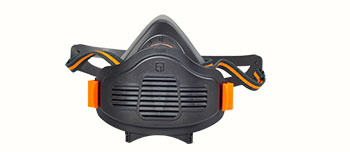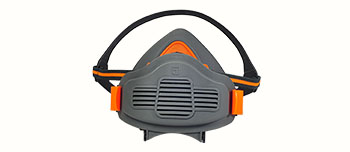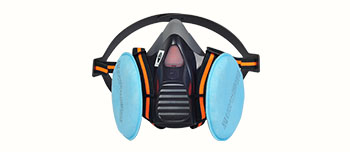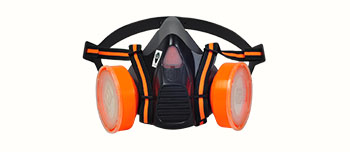Asbestos is a material widely used in industries such as construction and manufacturing, but its fibers pose a great threat to human health. Long term inhalation may lead to serious diseases such as asbestosis and lung cancer. Therefore, workers engaged in asbestos related work must wear suitable protective masks to effectively block the inhalation of asbestos fibers. So, how should asbestos workers choose masks?
1. Choose masks that meet the standards
Asbestos fibers are extremely small and cannot be effectively protected by ordinary masks. It is necessary to choose high-efficiency protective masks that meet national or international certification standards. Common standards include:
NIOSH N100/P100/R100: filtration efficiency ≥ 99.97%, can effectively block asbestos fibers.
GB 2626-2019 KN100 (Chinese standard): The filtration efficiency for non oily particulate matter is ≥ 99.97%.
EN 149 FFP3 (European standard): Filtration efficiency ≥ 99%.
2. Prioritize choosing a full face mask or a half face mask
The asbestos working environment usually has a high concentration of dust. It is recommended to choose:
Full face mask (covering the mouth, nose, and eyes): can prevent asbestos fibers from contacting the eyes and facial skin.
Half face mask+goggles: If using a half face mask, it is necessary to pair it with well sealed goggles to prevent fibers from entering the eyes.
3. Ensure the tightness of the mask
Even if masks have high filtration efficiency, if not worn tightly, they may still cause leaks. Suggestion:
Choose a mask with an adjustable headband to ensure a snug fit on the face.
Conduct a tightness test (such as positive/negative pressure test) to check for air leakage.
Beards or facial hair may affect sealing, it is recommended to wear it after shaving.
4. Consider respiratory comfort and durability
Masks with exhalation valves: can reduce respiratory resistance and are suitable for long-term work.
The design of replaceable filter cotton extends the service life of masks and reduces long-term costs.
5. Regular replacement and proper maintenance
The filter cotton or filter box should be replaced in a timely manner according to the usage situation to avoid affecting the protective effect due to blockage.
Masks should be properly cleaned after use (such as washable parts) and stored in a dry, pollution-free environment.
6. Combined with other protective measures
Masks are only a part of protection, asbestos workers should also:
Use dust-proof work clothes, gloves, etc. in conjunction to reduce skin contact.
The working environment should strengthen ventilation or use local exhaust equipment to reduce the concentration of asbestos in the air.
Regularly conduct occupational health check ups and monitor lung health status.
conclusion
The high risk of asbestos work requires workers to strictly choose and use protective masks to ensure high filtration efficiency and good sealing, and to cooperate with other protective measures in order to minimize health hazards to the greatest extent possible. Wearing masks correctly is not only a requirement for occupational safety, but also a responsibility for one's own health.
Open a new conversation
 English
English





